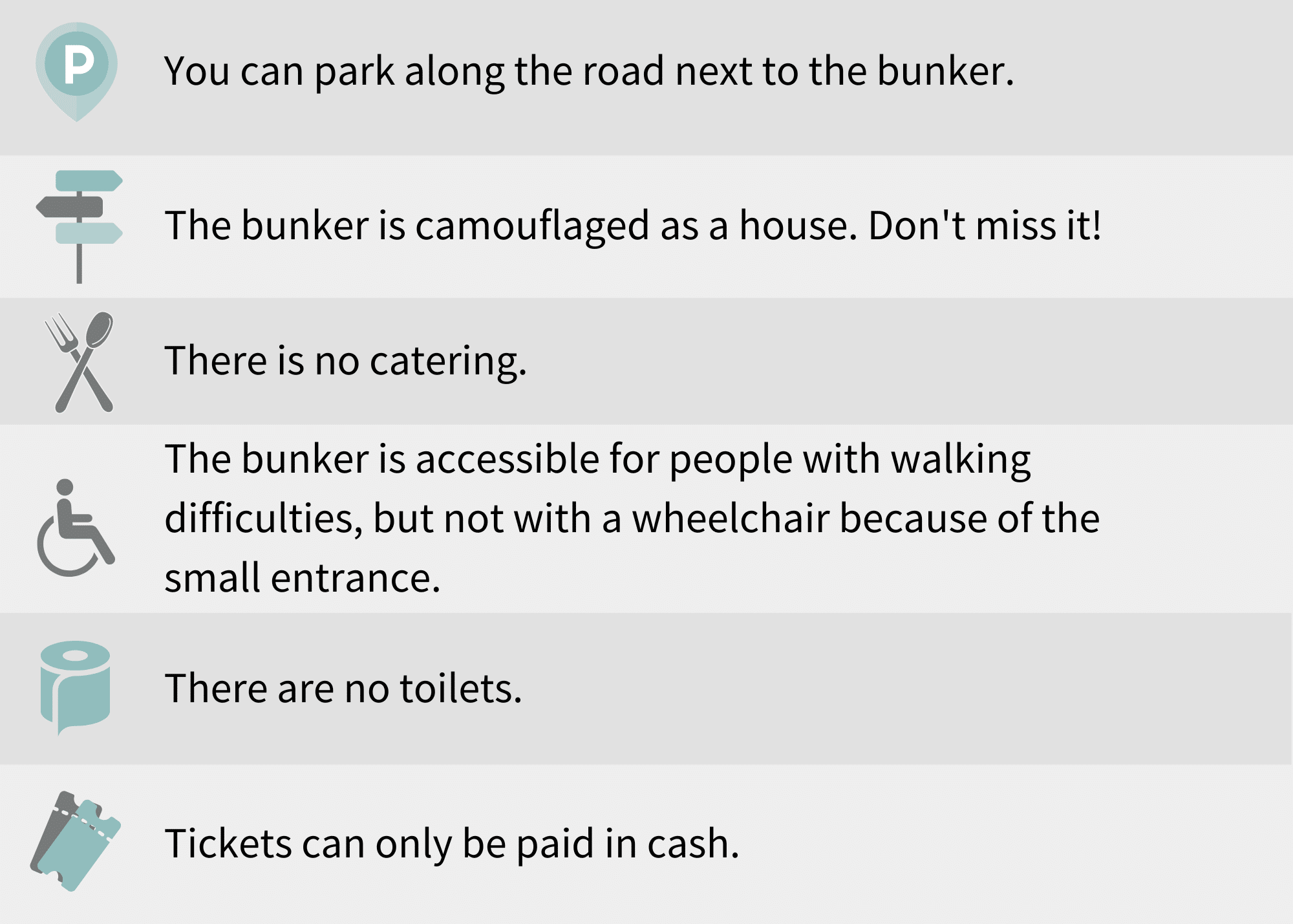A line of defence was set up on the landward side of the Vlissingen fort, consisting of a tank moat with bunkers for machine guns and anti-tank guns behind it. This so-called Landfront Vlissingen is still largely intact and was designated as a protected national monument 10 years ago. Auxiliary bunkers were situated at some distance behind the moat, such as the command bunker at the corner of the Abeelseweg and the Nieuwe-Vlissingseweg. The bunker was equipped with a telephone exchange that facilitated communication between the various combat bunkers along the tank moat. There was also a radio installation so that other command posts a great distance away could also be reached. The bunker was camouflaged by decorating it to look like a house, complete with painted-on windows and a fake roof. A few years ago this original camouflage was reapplied. The bunker is now open to the public for the first time.
Command bunker 621
other activities in the area
Bunker 618
Toorenvliedt is the only intact divisional headquarters in the Netherlands and the most complete one within the Atlantic Wall.
Read more

